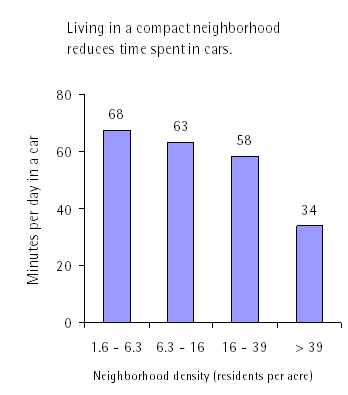One benefit of living in a compact neighborhood rather than a sprawling suburb: You don’t spend as much time in your car. The chart below, derived from a national transportation survey, makes the point pretty clearly:

The bottom line: If you live in a compact place, you don’t drive as much.
That said, the total amount of time people spend getting from place to place doesn’t vary much by neighborhood density — in metropolitan counties at least, residents of the urban fringe, sprawling suburbs, compact suburbs, and dense cities all spend an average of 77 minutes a day travelling, give or take 4 minutes. What changes is how people travel. If you live in a compact neighborhood, you’re more likely to take a trip on foot or by transit. If you live in a sprawling one, you take virtually all your trips inside a car, truck, minivan, or SUV.
Obviously, if you like spending time in your car — and some people definitely seem to view driving as quality private time — this information probably won’t affect you one way or another. But if you don’t really like driving, then this may give you a clue about how to cut your car time in half.


